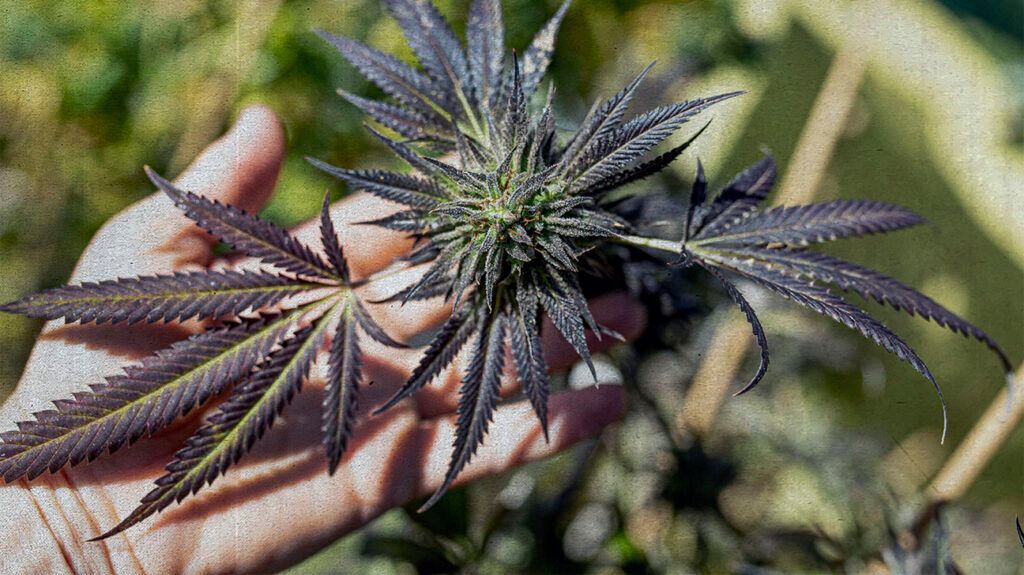Cannabis, also known as weed, does not contain nicotine. However, some people who smoke cannabis may use it with tobacco, which does contain nicotine.
Cannabis refers to a plant that people may use for recreational and medicinal purposes. The most well-known components of the Cannabis sativa plant include cannabidiol (CBD) and delta-9-tetrahydrocannabinol (THC). While research is ongoing, evidence suggests the components of this plant may have potential health benefits.
Cannabis is available in many forms, including edible products, topical formulations, and versions that people can smoke or vape. When people choose to smoke cannabis, they might smoke it with tobacco.
Tobacco is a plant with leaves that contain high levels of the addictive chemical nicotine. Evidence notes that products containing tobacco and nicotine have strong links to cancer and other diseases.

Cannabis and products that derive from the cannabis plant do not contain nicotine.
However, people
Nicotine is the main psychoactive ingredient in tobacco products. Nicotine is a highly addictive substance and has associations with chronic disease and health issues.
While cannabis smoke contains
Individuals who smoke cannabis may use it with tobacco. This includes individuals who use both products during the same period, known as concurrent use, and those who use cannabis in or with a tobacco product, known as co-administration.
A 2022 study suggests that almost
Some people use cannabis and tobacco at the same time. Additionally, evidence suggests that people may use both products at the same time due to cost effectiveness and the interaction between chemicals.
The use of cannabis and tobacco has associations with adverse health effects. Evidence suggests that the use of both products, known as co-use, can exacerbate some of these adverse health effects, such as reduced lung functioning and nicotine dependence.
However, other formulations of cannabis are available that do not involve inhaling smoke. They include edibles, such as brownies or candies, teas, topical treatments, and capsules or supplements. A
Cannabis use itself is not specifically associated with lung damage. As other methods of using cannabis, such as ingestion, do not involve inhaling smoke, they are less likely to involve some of the potential side effects of cannabis use and the health risks relating to tobacco and nicotine use.
Cannabis use disorder refers to when a person cannot stop using the drug despite it interfering with aspects of their life. In some people, cannabis use can lead to this condition. In severe cases, it can take the form of addiction.
While more research is necessary, some evidence suggests that about 30% of people who use cannabis may have some degree of cannabis use disorder. People who use cannabis at a younger age are more likely to develop a cannabis use disorder. Other research suggests people who use cannabis have roughly a
However, evidence notes that alcohol and tobacco abuse is
Nicotine is a highly addictive substance that can adversely affect health in several ways. Research notes that nicotine use through smoking can lead to the following health issues:
- cancer
- heart disease
- lung disease
- poorer general health
- stroke
- eye disease
- gum disease
- sexual dysfunction
- birth problems
- diabetes
- financial, work, and social problems
In addition to nicotine, cigarettes and other tobacco products also contain
As such, health experts acknowledge smoking as a major preventable cause of premature death and disability worldwide.
When a person stops smoking, they may experience nicotine withdrawal symptoms. This describes the physical and psychological effects a person may feel when nicotine starts to leave the body. Symptoms
Researchers are still investigating the effects cannabis can have on health. People may use cannabis recreationally due to its potential euphoric and relaxing properties.
However, some components of cannabis may also have therapeutic benefits. These
- managing pain
- reducing anxiety
- helping to decrease opioid use disorder
- helping treat epilepsy
- reducing symptoms of HIV and AIDS
- managing glaucoma
- improving tic severity in individuals living with Tourette syndrome
- reducing symptoms of inflammatory bowel disease and irritable bowel syndrome
- improving symptoms of multiple sclerosis
- managing side effects of cancer treatment
- improving sleep problems
Clinical research into the health benefits of cannabis is ongoing. Currently, the
Some research suggests that possible risks of cannabis may include:
- an association with mental health conditions
- birth problems if a person uses cannabis while pregnant
- relationship problems
- slower reaction times
- coordination difficulties
Learn about the health benefits and risks of cannabis.
Cannabis is a drug that derives from the cannabis plant. It may have some health benefits, such as helping with pain relief, helping reduce anxiety, and helping manage chronic health conditions. People can use cannabis in different ways, including topical administration, ingesting, or smoking.
Cannabis itself does not contain nicotine. Nicotine is an addictive substance that is present in tobacco. Some people may wish to smoke cannabis and tobacco together. However, this involves inhaling harmful substances that can damage the body, including the lungs.
Administering cannabis in other ways is less likely to involve harmful side effects. However, cannabis can be an addictive substance, and research into its safety is ongoing.
Anyone who is considering using cannabis for any purpose should check that it is legal to do so in their state.
